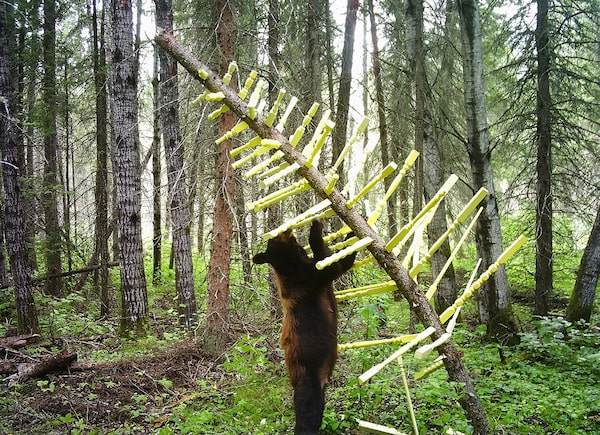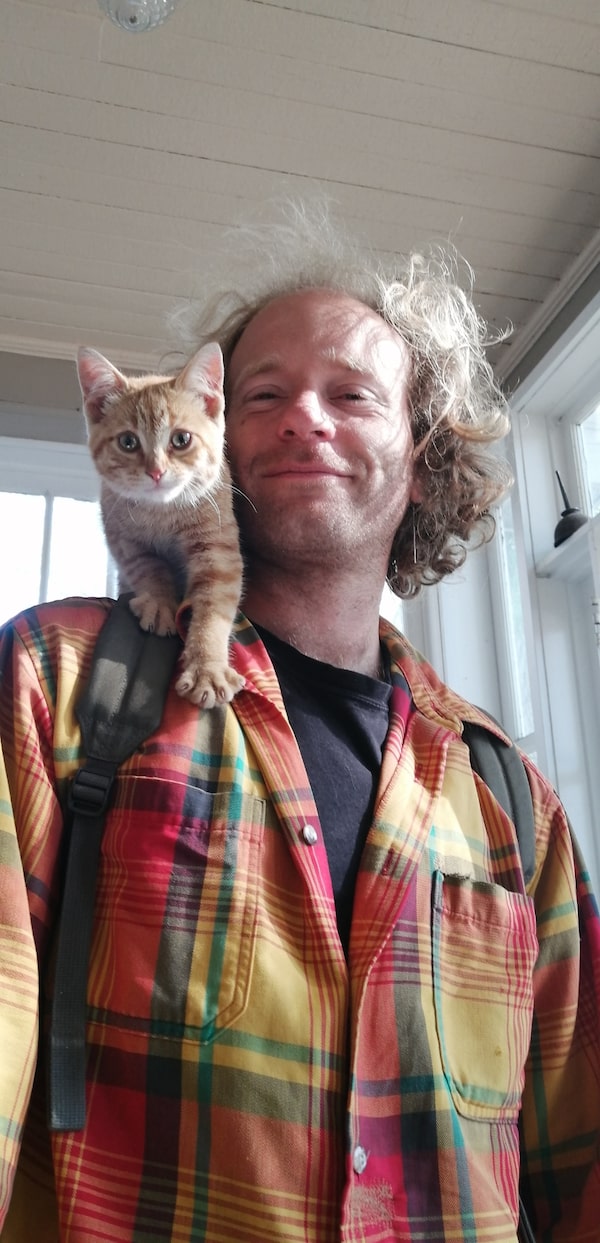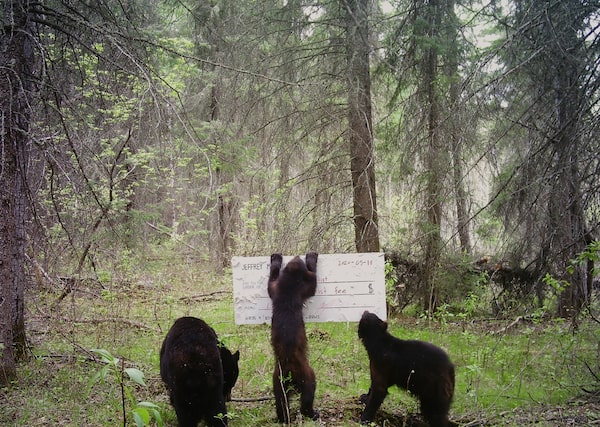
Jeff Meldrum places large-scale 'sculptural interventions' in the forest and uses motion-activated cameras to document wild animals interacting with the works.Jeff Meldrum/Handout
For his continuing Art for Animals project, Saskatchewan’s Jeff Meldrum places large-scale “sculptural interventions” in the forest and uses motion-activated camera to document wild animals interacting with the works. He sees the beasts as collaborators, which raises questions: Should the creatures be paid for their contributions? Does a bear cash a cheque in the woods?
A selection of his photographs, including a family of black bears checking out a giant personal cheque, are showing at Toronto’s Gallery 44 Centre for Contemporary Photography to Feb. 4. Meldrum spoke to The Globe and Mail about modern art, anthropomorphism and getting busy with beavers.
You refer to the creatures you interact with as so-called wild animals. Why so-called?
When animals are described as being wild, it reinforces the dichotomy between humans and animals. I think that dichotomy doesn’t serve the animals well. It diminishes their value.
And yet people love to humanize animals.
We anthropomorphize them, and I don’t think it’s healthy. One of the things I’m trying to do is to subvert that. I’m ascribing human qualities to these animals, but I’m doing so in an absolutely ridiculous way. The animals can’t possibly be interpreting what I’m doing out there. I hope that heightens the absurdity of our need to ascribe human qualities to animals and to not accept them for what they are, which are living, breathing, thinking animals who see the world in much different ways than we do.
Why is there that impulse to attribute human traits to animals?
It’s the lack of understanding of the animals. Humans don’t like to grapple with the unknown.

Photographer Jeff Meldrum.Jeff Meldrum/Handout
Speaking of grappling with the unknown, is your project a comment on the unfathomability of contemporary art?
Absolutely. If an alien would come to Earth and look at modern art, I’m sure they would be flabbergasted as to what it means. It’s obviously a human construct. Whereas music can be found in nature. Birds sing. Different aesthetics in general can be found in bird populations. Bowerbirds collect shiny objects that they use to entice mates to come visit them. But conceptual art is something that feels very human.
We’re all just big, dumb bears at the art gallery, aren’t we?
Exactly. It is as hard for people who don’t have a background in art to understand conceptual art as it is for an animal to understand it.
The bears destroyed one of your sculptures. Do you see that as a reaction to the art, or is it part of the art?
Both. It was a turning point for me in how I view the artwork. Before the bears did that, the idea was a standalone piece of art, and I would maybe take a couple of photographs of a bear or an elk coming to visit it. But once I saw what the bears did, I began to see them as collaborators.
Hence the giant cheque? Are you paying them for their contribution?
Right. And then I made some shapes, and together the bears and I took turns moving them around into different forms.
There’s obviously a voyeuristic element to the photography, peeping into the woods. So many fables are set in the woods. What is it about forests that fascinates us?
It’s definitely a theme in literature, where it’s a magical place that sometimes can be scary but sometimes be beautiful. Maybe it’s that variation that attracts us – that it can harbour beauty and danger all at once.

Before bears destroyed one of his works, Meldrum's idea was a standalone piece of art that he would take photographs of animals coming to visit. Once he saw what the bears did, however, he began to see them as collaborators.Jeff Meldrum/Handout
Your Art for Animals project is ongoing. What’s next?
I’m collaborating with beavers, which are a pretty interesting species. They’re ecosystem builders, and they serve as icons of Canadiana. But they only work in the late evenings and early mornings. It’s tough to get photographs.
Temperamental artists, am I right?
Yes, they’ve proven to be difficult to work with.
Jeff Meldrum’s Art for Animals shows at the Toronto’s Gallery 44 Centre for Contemporary Photography to Feb. 4.
 Brad Wheeler
Brad Wheeler